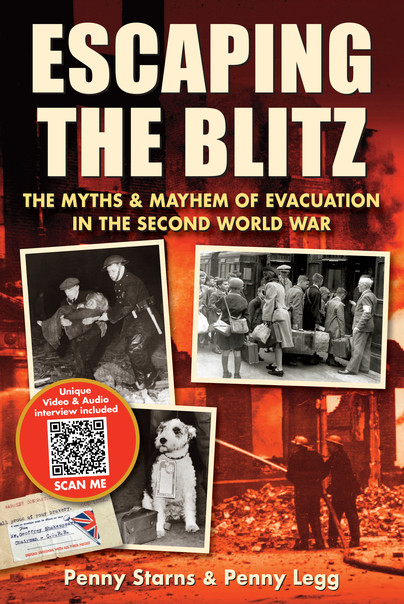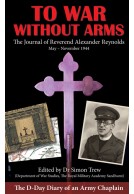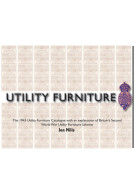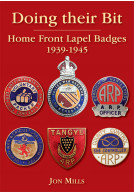Google Books previews are unavailable because you have chosen to turn off third party cookies for enhanced content. Visit our cookies page to review your cookie settings.
Escaping the Blitz (Paperback)
The Myths & Mayhem of Evacuation in the Second World War
Imprint: Sabrestorm Publishing
Pages: 192
Illustrations: illustrated throughout
ISBN: 9781781220177
Published: 1st September 2021
Pages: 192
Illustrations: illustrated throughout
ISBN: 9781781220177
Published: 1st September 2021
You'll be £14.99 closer to your next £10.00 credit when you purchase Escaping the Blitz. What's this?
+£4.99 UK Delivery or free UK delivery if order is over £40
(click here for international delivery rates)
Need a currency converter? Check XE.com for live rates
(click here for international delivery rates)
Need a currency converter? Check XE.com for live rates
Escaping the Blitz is the story of the biggest social upheaval in British history. Portrayed by the government as a positive by-product of the Second World War, civilian evacuation represented the cornerstone of Britain's civil defence strategy. In a single stroke, children were uprooted from their close-knit families and replanted in unfamiliar and sometimes hostile surroundings. Over the course of three days beginning on 31st August 1939, three and a half million vulnerable adults and children were evacuated from cities to rural areas. This totally haphazard mingling of social classes had profound and long-lasting effects on British society. From a government standpoint evacuation was an exercise in military logistics, but for those who took part it was a life changing experience. Furthermore, there was no typical evacuee experience, only a shared sense of alienation in the face of extreme adversity.
The general trend for domestic evacuation was for central government to offload responsibility for evacuees onto rural local authorities. When it became clear that the latter had neither the basic resources nor administrative machinery to cope with large influxes of evacuees, central government was forced back into the policy driving seat. Yet a completely different approach was adopted towards overseas evacuation. Known as Sea-Vacs, children sent abroad were expected to act as ambassadors for Britain, tug at the heart strings of host nations, and elicit international financial support for the war effort. Aside from this role Sea-Vacs were essential for the survival of the British race, and government ministers fully expected them to eventually fight from the colonies in the event of a German invasion of Britain. Public perceptions of children however, shifted throughout the war. In 1939 children were either viewed as innocents in need of protection, or as useless mouths who were draining the nation of vital food supplies. Yet by 1941 they had become active participants in the war effort, and children as young as five could be found working on the land. By 1943 the Ministry of Agriculture and Fisheries considered children to be a vital component in Britain's food production industry. They remained so long after the war had ended. Moreover, although some evacuees were lucky enough to have positive and uplifting encounters with their host families, others less fortunate suffered physical, emotional and sexual abuse. This book reveals the myths and mayhem which accompanied the three waves of wartime evacuation and document the experiences of evacuees in their own words.
Throughout the book QR codes link readers (using a suitable phone or tablet) to unique video content of evacuees telling their story in their own words.
Other titles in Sabrestorm Publishing...















